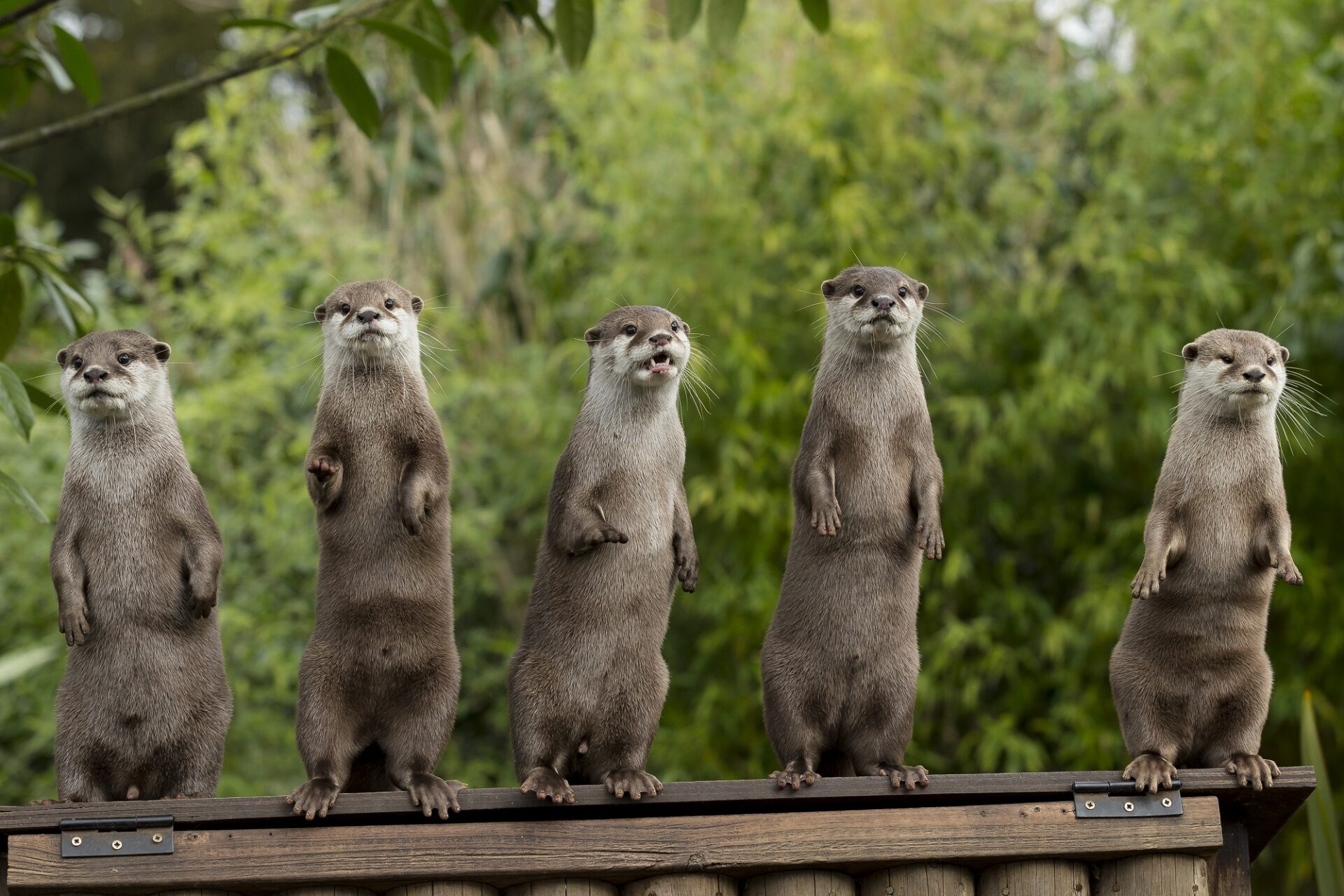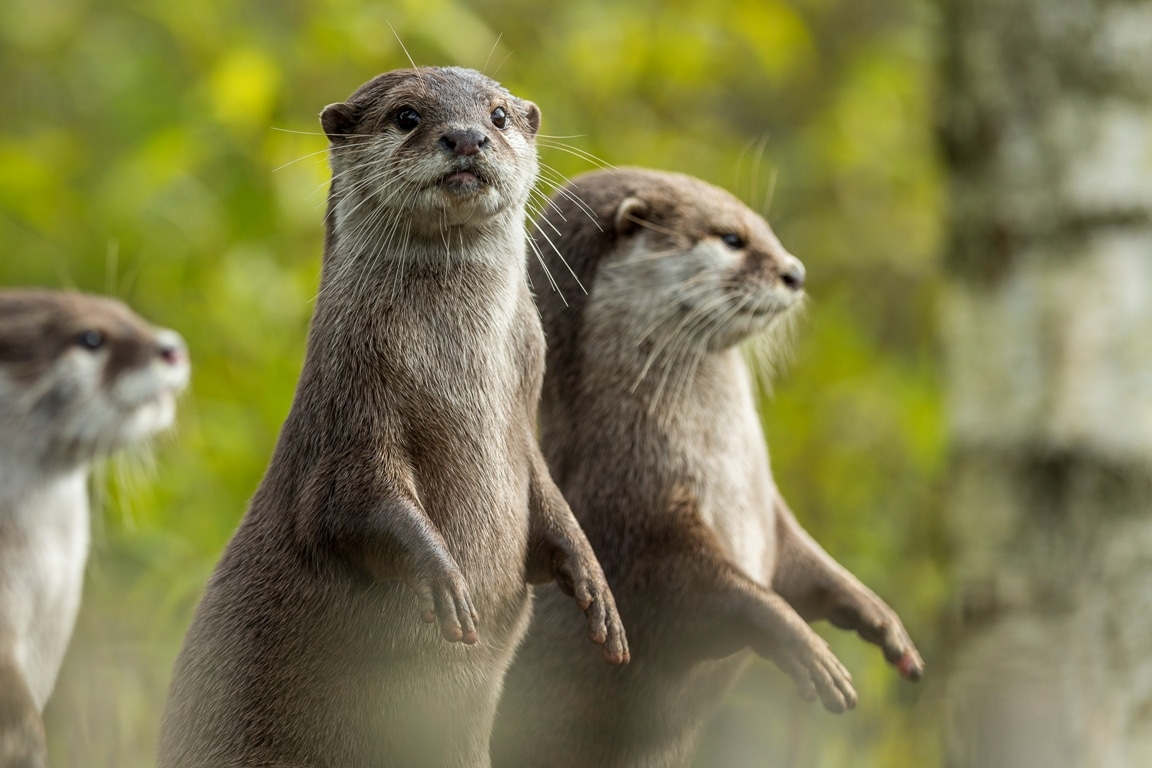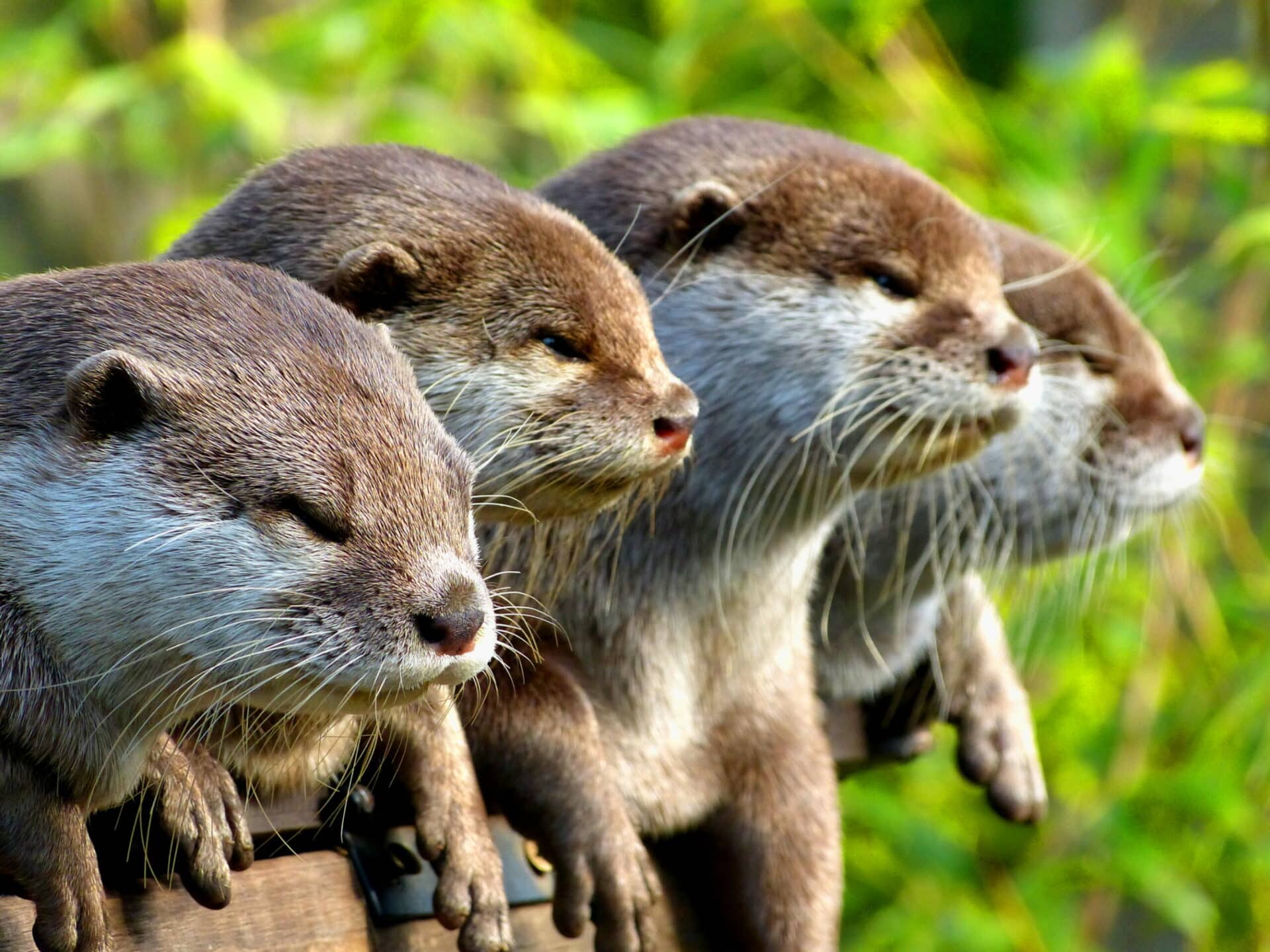Asian small-clawed otter
Common Name: Asian small-clawed otter
Scientific Name: Aonyx cinerea
Asian small-clawed otters can make at least 12 different sounds to communicate, including alarm, greeting and mating calls.
This species of otter is playful and sociable, and they are often found in groups of 12 or 13.
These otters have broad, powerful molars for crushing the shells of crabs and shellfish.
Fast Facts
-
Status
Vulnerable
-
Size
Males: 36-44 cm; females: 43-47 cm
-
Weight
2.4-3.8 kg
-
Gestation
60 days
-
Young
2-7
-
Life span
11 years
In the wild
Asian small-clawed otters mainly eat crabs and shellfish, but they will also eat molluscs such as snails, small fish and insects, and occasionally amphibians, snakes and small mammals. They use touch as well as sight to catch their prey, using their forefeet to grab crabs and crayfish from nooks and crannies. These otters dig up shellfish and instead of having to crush the shells, they leave them in the sun so that the heat makes them open up.
This species is found across a wide area, in areas of India, Southeast Asia, the Philippines, Taiwan and southern China. They live in a variety of wetland habitats, such as lakes, streams and rivers, coastal wetlands, marshes, mangroves and rice fields.
Asian small-clawed otters are monogamous, which means that they keep the same mate. They can have up to two litters of young every year. Both parents help with raising the young, and young from previous litters may also help. When the young are born, they weigh about 50g and are about 14cm in length. Their eyes stay closed until they are 5 weeks old. When they are 7 weeks old they learn to swim. When the young are old enough to leave the den they are in danger of getting lost or attacked by predators. To try to stay safe, they use calls to stay in contact with one another. If a cub is separated from the group they give a special call to show they are lost, and the rest of the litter run to find it.
Natural predators of the Asian small-clawed otter are not well known, however snakes and crocodiles may be a threat to them.
Asian small-clawed otters are strong and agile swimmers, and they may use this to their advantage to get away from other animals that may harm them.
The main threat to Asian small-clawed otters is habitat loss. There are a number of reasons why their habitats have been destroyed, for example for the creation of tea and coffee plantations and human settlements. In addition, an increased use of pesticides has affected the quality of their habitats. This species is also threatened by poaching, and by a reduction in the prey they eat which is caused by pollution. Measures have been put in place to try to protect the Asian small-clawed otter. It is listed on CITES Appendix II, which means that the trade of its pelt is controlled. In addition, they are protected in almost all of the countries in which they are found, meaning that it is illegal to kill them. Some of the areas in which these otters live have been made into networks of protected areas.



